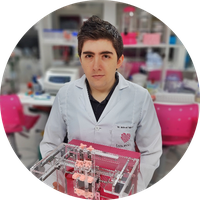Biotechnology & medicine
Siddharth Krishnan
A tiny, powerful sensor for making disease diagnosis cheaper, faster, and easier.

Latin America
Gabriel Liguori
His platform for manufacturing cellular tissues using 3D bioprinting could reduce the need for organ donation for transplants.

China
Yan Tan
Achieving the alleviation or treatment of diseases through microbiome treatment

Latin America
Maria Pia Campot Moreira
Analyzing the microorganisms in our intestine to improve our health.

China
Jing Tang
Developed the NanowireRetina—a new generation of implantable artificial retina to restore vision
